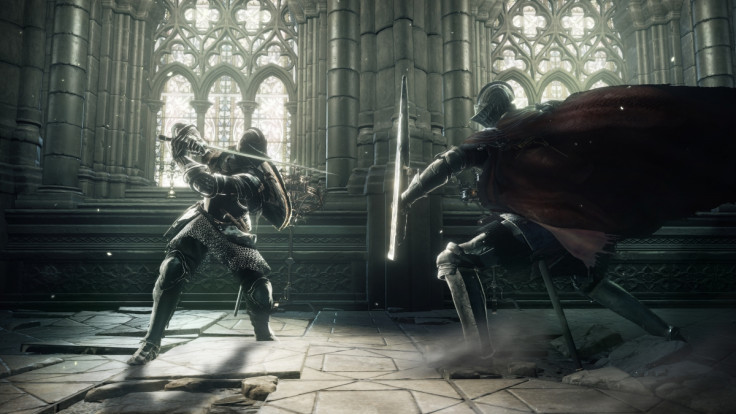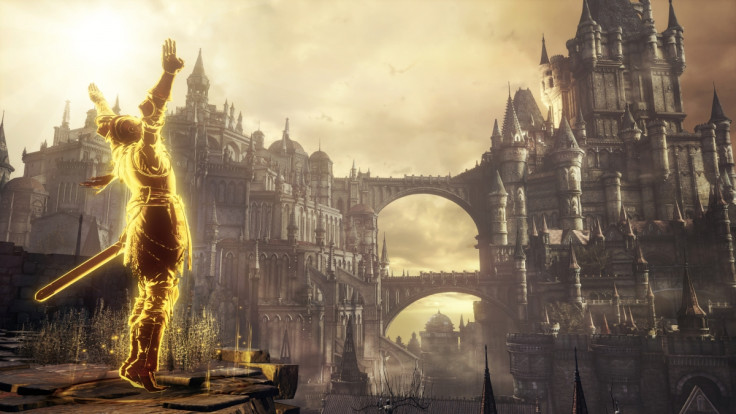Dark Souls 3 hands-on preview: Surviving three hours of FromSoftware's barbaric return

After a detour into the nightmarish, Bram Stoker and HP Lovecraft-inspired world of 2015's magisterial Bloodborne, master of the punishing RPG FromSoftware is returning to its tortured roots in Dark Souls 3.
Opinion was split over 2014's predecessor, but Hidetaka Miyazaki's return to the director's seat for this third act - due for release on 12 April, on PS4, Xbox One and PC - has eased concerns as to Dark Souls 2's environmental dissonance and disjointed design.
Spending three hours in Dark Souls 3's kingdom of Lothric was a haunting pleasure, but making a broader judgement call on the potential of a Souls game over such a short period is nigh on impossible, as the numerous mammoth boss encounters and oblique lore tend to be revealed gradually. After navigating mozaic-like structures and prisons of torture, what I can confirm is that Dark Souls 3 is likely to be the game fans are hoping for, but not necessarily expecting.
One instantly notable change is the feel of movement, which seems more akin to Bloodborne's swift, aggressive character motions. In turn, roll patterns and the overall pace feels much more suited to dodge-and-parry character builds than it ever has, although the option to lug around a weighty shield still allows for cautious, defensive play.

During my initial steps as the Unkindled Ash - revealed in a beautifully ominous opening cut-scene to be on a quest to find the four Lords of Cinder - I stumbled upon a tutorial section reminiscent of its predecessor. Possibly an olive branch to those who fell at the first hurdle in the first game.
An open courtyard area within the first hour will signal a familiar mixed sense of trepidation and excitement for any Souls veteran, and the first test of mettle proves that concerns about a possible toned-down difficulty level are unfounded.
A towering knight infected by a grotesque, swirling contagion on his shoulders presents the kind of obstacle that often turns off new players, but felling the corrupted beast he devolves into brings with it the same sense of euphoria in victory that has become the lifeblood of the Souls faithful.
While mental perseverance and split-second reflexes seem as integral as ever, a new mechanic called weapon arts further adds to the tactical gameplay to devastating effect. The system promises to change dependant on your weapon of choice, with the broadsword found in my playthrough swiftly skewering enemies following a momentary charge with the left trigger.

Employing weapon arts depletes a new meter that sits between the standard stamina and health bars. This same gauge governs magic and miracle uses for arcane builds which at this stage is a welcome alteration to the numbered usage system from previous games. A secondary Estus Flask, which refills at the returning bonfire checkpoints restores the arts/magic meter, while the slow-to-consume health flask retakes its place alongside your inventory.
If a few hours are anything to go by, it would seem that weapon drops from defeated foes may define the late-game experience, as I picked up more armour from standard enemies than I can remember ever discovering in prior games in the series. A base Luck stat would appear to confirm that RNG loot may have seeped into the Dark Souls design, although whether this will be integral to the overall experience, or an optional mechanic for Souls-addicts, will only become apparent after venturing further into Lothric.
The most welcome change I came across however, was the Firelink Shrine that acts as the central hub. Unlike the static pastoral asylum of Majula in Dark Souls 2, the Firelink Shrine is a foreboding mausoleum-like structure, where empty thrones overlook a lone, dwindling bonfire. The NPCs here are cryptic and intriguing in ways that Dark Souls 2's meandering traders were not. Rather than just acting functionally as a place to buy items, craft weapon upgrades and level up, this mysterious hub epitomises Miyazaki's intricate environmental design where prophecies and history bleed from cracked, ornate structures.
My time with Dark Souls 3 ended following a meeting with the second boss, a metallic creature with an excessively large mace who likes to inflict a crippling frostbite status effect. With a side quest involving a stony-faced thief locked away in a cage, and several unexplored paths left among the interwoven maze I had spent time exploring, it became evident that the problems in Dark Souls 2 have been addressed immediately.
If familiarity does indeed breed discontent, it would seem that FromSoftware are fully aware of that fact, as Dark Souls 3's first three hours maintains the qualities that transformed the first Dark Souls from a niche 'hardcore' game into a mainstream franchise while introducing fresh gameplay elements. It's not quite a different beast entirely, but no matter what barbaric form it takes on 12 April, I for one will be ready to slay it.
For all the latest video game news follow us on Twitter @IBTGamesUK.
© Copyright IBTimes 2025. All rights reserved.






















